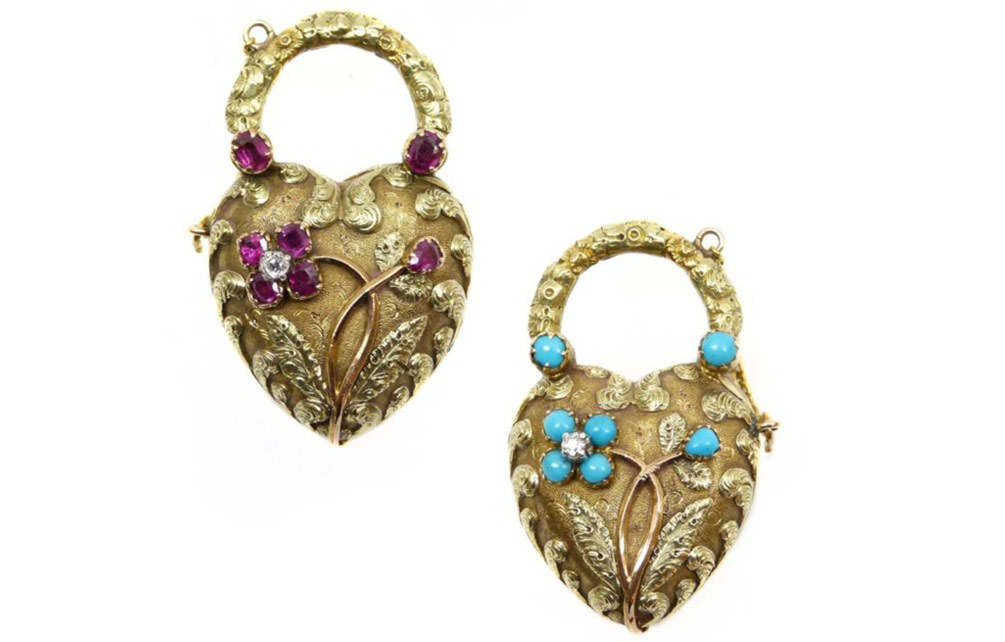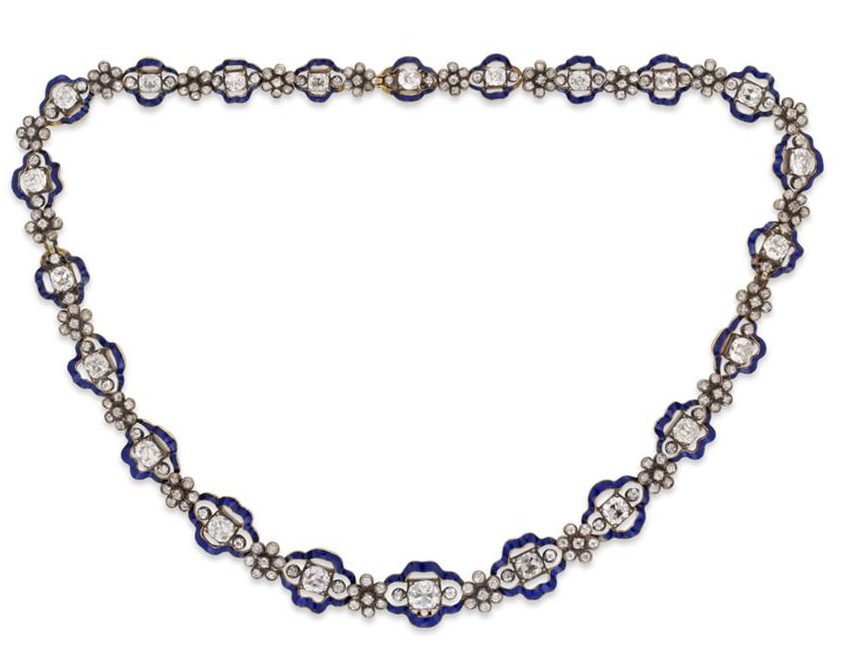Advice on shopping for Antique & Vintage Jewelry

I remember when I started collecting antique jewelry almost 20 years ago. It always felt like a treasure hunt. The thrill of the search was like a shot of adrenaline. I loved scouring flea markets and rummaging through bins and melt down piles to uncover true rare finds as much I loved looking through perfectly curated glass cases in shops and antique fairs in New York (and other cities throughout the US), London and Paris. I still do. I rescued Victorian and Edwardian pieces when gold was skyrocketing and women sold what they didn’t know. I learned how to barter, bargain (sometimes beg) and made mistakes along the way — which, as any collector or the most seasoned of dealers will tell you, is unavoidable.
And, in these days when repros are rampant, a novice collector or new dealer has to be extra careful. Women’s desire for one-of-kind jewels and pieces with history has created a new generation of antique and period jewelry collectors. And with pieces from the (currently highly desirable) Georgian era, supply cannot meet the demand—resulting in molds being bought and techniques being passed down-all creating pieces that look damn good. This is then leading to unsuspecting buyers purchasing fakes from unknown dealers over the internet and a situation where thousands of these reproductions are posted on Instagram each day- These are met with lovely comments from other novice collections, not realizing that they are repros, giving the pieces more validity.
So, here’s something to think about—if Georgian is 200 years old and rare—why am I seeing more in two years than in the last twenty? How is that possible? There were just not that many pieces back then for the quantity there is now.
How do you know what’s authentic? Who do you go to? Where do you buy it from?
There are no rules that can teach you everything- often in the beginning there’s a lot of trial and error and working it all out just by being around the jewelry. But there are definitely some helpful tips on how to shop for antique and vintage jewelry if you’re a novice collector.
To pack of this information into one post is almost impossible but there will be future posts that will give more specific directions as well on different categories of jewelry such as engagement rings or time periods and stories in which we focus on specifics such as mourning and memento mori or portrait jewelry. Throughout we will interview dealers and historians, with knowledge an expertise.
In the mean time—here’s a start:
Tip 1: IDENTIFY THE ERA OR ERAS YOU ARE ATTRACTED TO: You can find this out by browsing shops and researching the time periods in books, museum exhibits and auction catalogs and online sites to see which eras you are drawn to. Also look at examples of the most popular pieces and prevalent details of each era and get familiar with them.
Tip 2: ASK QUESTIONS: If the dealer/shop owner is honest and trustworthy and passionate about what they do—they will be happy to talk to you about whether a piece is an original or has been ‘put together or reproduced’, about the stones and settings, the provenance and hallmarks. All of this has to do with the investment you are making as authentic original pieces in excellent condition appreciate with time. All aforementioned questions will affect the value of the piece.
Tip 3: HOW CAN I TELL IF IT’S A REPRODUCTION: The more you shop around, the more you will begin to learn. In addition to trustworthy dealer, learn to read hallmarks, learn how pieces from different eras are supposed to feel to the touch, hold and try on as much and you can. Go to auction previews and and shop the various antique shows and fairs that are in your area.
Tip 4: CAN THE PIECE TAKE EVERYDAY WEAR? For example: Georgian rings are silver topped and closed back with foil between the stone and the setting to enhance the color of the earlier diamonds and colored gemstones. They are beautiful, but beware you cannot wash your hands with them or you will ruin the foil and the color will fade and show the earlier stone cuts’ imperfections. Anything that is over 200 years old should be handled with care and not on your hands, fingers or necks everyday.
Tip 5: BEFORE YOU SHOP SET YOUR BUDGET: For new collectors, the Victorian era is a safe place to start thanks to the industrial revolution and the ability to produced a variety of sentimental and symbolic pieces that are quite detailed . They have a language all their own and they command less tony prices than earlier, rare Georgian jewels in excellent condition, signed pieces. Early 20th century pieces in the particular the Art Deco period, can also be rather pricey, as many of these styles are also rare and crafted in platinum and diamonds.
Tip 6: WHERE THE BARGAINS ARE:When hunting for a bargain, it’s all about where you are scouting out your antique and vintage piece. Flea markets, which don’t cost much for set up and booth space are great for starter jewelry enthusiasts and finds. Some of the fairs are perfect for this as well. You can bargain — but first-time buyers should shop around and, if possible, bring a seasoned collector they trust the first few times.
Tip 7: RESEARCH AND SEEK OUT RELATIONSHIPS: If you are looking for something specific, research dealers who specialize in at least the time period the piece was made or at least the country of origin. Building relationships with retailers and dealers should not be underestimated. If you are a repeat customer and they sense loyalty — they will offer the same back.
Tip 7: WEAR, DON’T SAVE YOUR JEWELS: My advice to friends when they ask (or sometimes I give it unsolicited) is to buy jewelry you don’t have to “save” for a special occasion. Invest in ‘wear now” unless you plan on having a shop or a museum showing of your own. I of course, do not take my own advice and have jewelry that sits waiting for the right event to come along, much in the way I approach dating—as in sitting and waiting for the guy to come knocking at my door instead of putting on a piece that makes me feel good and going out and finding him. To that effect, however, I am much better at nabbing the jewel I want then landing the guy who is right for me.
Tip 8: READ AS MUCH AS YOU CAN: there are many great books out there about collecting antique jewelry. I recommend those by Claire Phillips for a glimpse into varied time periods and jewels. I would stay away from price guides as they change with supply and demand.
Tip 9: TOOLS OF THE TRADE: Purchase a 10x jeweler’s loupe and learn how to use it to look at the stones to see if there are chips or cracks as well as looking at the shanks, to check if there are hallmarks –this will help you to ask questions and become your own expert along the way.
Tip 10: MISTAKES ARE PAR OF THE LEARNING PROCESS. We all buy a piece that’s not right from time to time, which allows you to know better when the next fair rolls around. In the meantime beware of memento mori pieces, portrait jewels and Giardinetti rings.
Watch for more articles on how to collect, coming soon.
A version of this article appeared on indesign.jewelry. It has been expanded and revised.
the top photo is a pair of Georgian padlocks from S.J. Phillips





